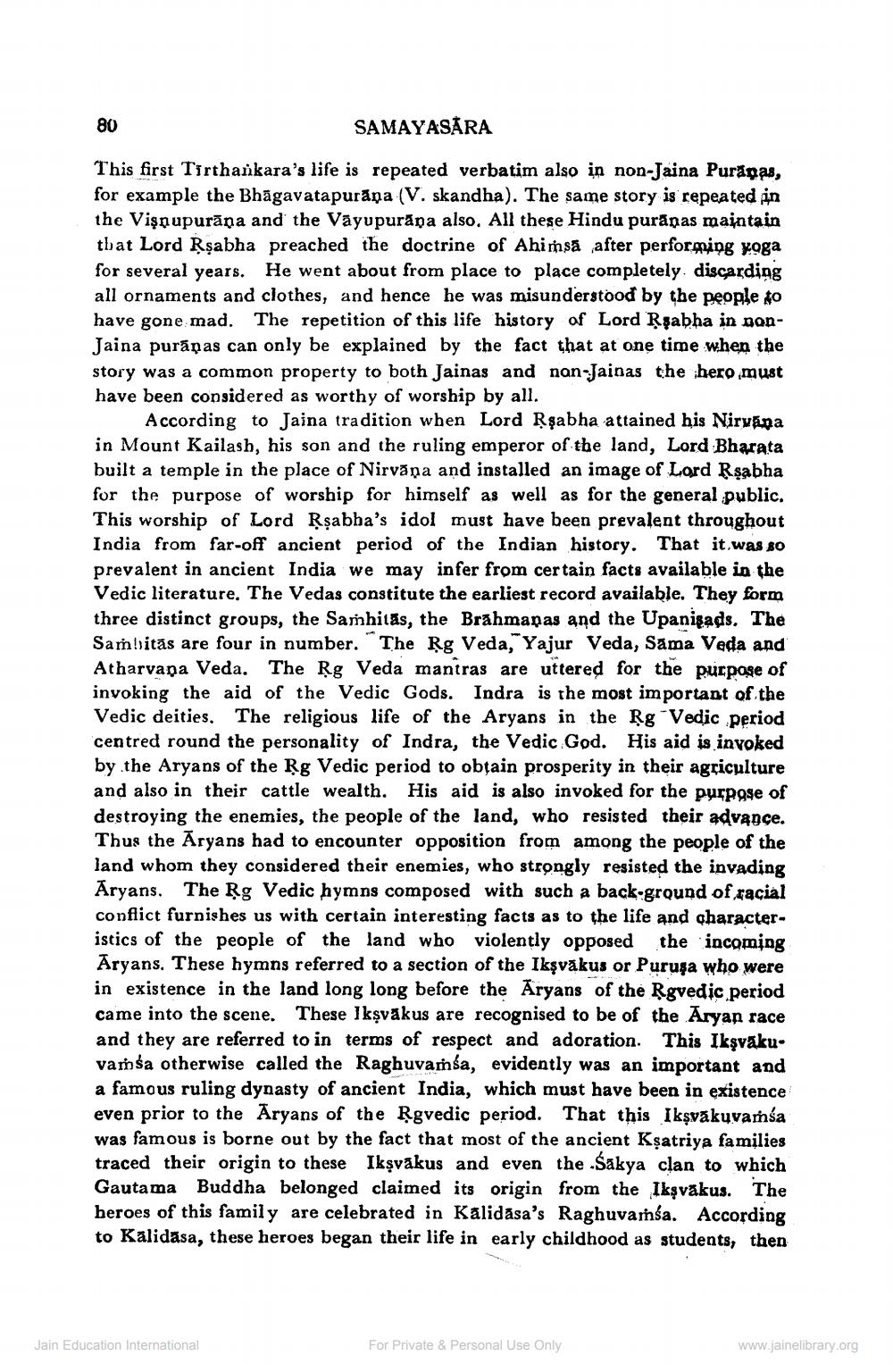________________
80
SAMAYASARA
This first Tirthařkara's life is repeated verbatim also in non-Jaina Puranas, for example the Bhāgavatapurāna (V. skandha). The same story is repeated in the Vişnupurāna and the Vayupurāpa also. All these Hindu purānas maintain that Lord Rşabha preached the doctrine of Ahimsa after performing xoga for several years. He went about from place to place completely discarding all ornaments and clothes, and hence he was misunderstood by the people to have gone mad. The repetition of this life history of Lord Rsabha in nonJaina puranas can only be explained by the fact that at one time when the story was a common property to both Jainas and nan-Jainas the hero must have been considered as worthy of worship by all.
According to Jaina tradition when Lord Rşabha attained his Nirvana in Mount Kailash, his son and the ruling emperor of the land, Lord Bharata built a temple in the place of Nirvāṇa and installed an image of Lord Rsabha for the purpose of worship for himself as well as for the general public. This worship of Lord Rşabha's idol must have been prevalent throughout India from far-off ancient period of the Indian history. That it was so prevalent in ancient India we may infer from certain facts available in the Vedic literature. The Vedas constitute the earliest record available. They form three distinct groups, the Saṁhilas, the Brahmapas and the Upanigads. The Sambitás are four in number. The Rg Veda, "Yajur Veda, Sama Veda and Atharvana Veda. The Rg Veda mantras are uttered for the purpose of invoking the aid of the Vedic Gods. Indra is the most important of the Vedic deities. The religious life of the Aryans in the Rg Vedic period centred round the personality of Indra, the Vedic God. His aid is invoked by the Aryans of the Rg Vedic period to obtain prosperity in their agriculture and also in their cattle wealth. His aid is also invoked for the purpose of destroying the enemies, the people of the land, who resisted their advance. Thus the Aryans had to encounter opposition from among the people of the land whom they considered their enemies, who strongly resisted the invading Aryans. The Rg Vedic hymns composed with such a back.ground of racial conflict furnishes us with certain interesting facts as to the life and characteristics of the people of the land who violently opposed the incoming Aryans. These hymns referred to a section of the Ikşvakus or Purusa who were in existence in the land long long before the Aryans of the Rgvedic period came into the scene. These Ikşvakus are recognised to be of the Aryan race and they are referred to in terms of respect and adoration. This Ikşvakuvarsa otherwise called the Raghuvamsa, evidently was an important and a famous ruling dynasty of ancient India, which must have been in existence even prior to the Aryans of the Rgvedic period. That this Ikşvakuvarsa was famous is borne out by the fact that most of the ancient Ksatriya families traced their origin to these Ikşvākus and even the .Sakya clan to which Gautama Buddha belonged claimed its origin from the Ikşvakus. The heroes of this family are celebrated in Kalidasa's Raghuvamsa. According to Kalidasa, these heroes began their life in early childhood as students, then
Jain Education International
For Private & Personal Use Only
www.jainelibrary.org




